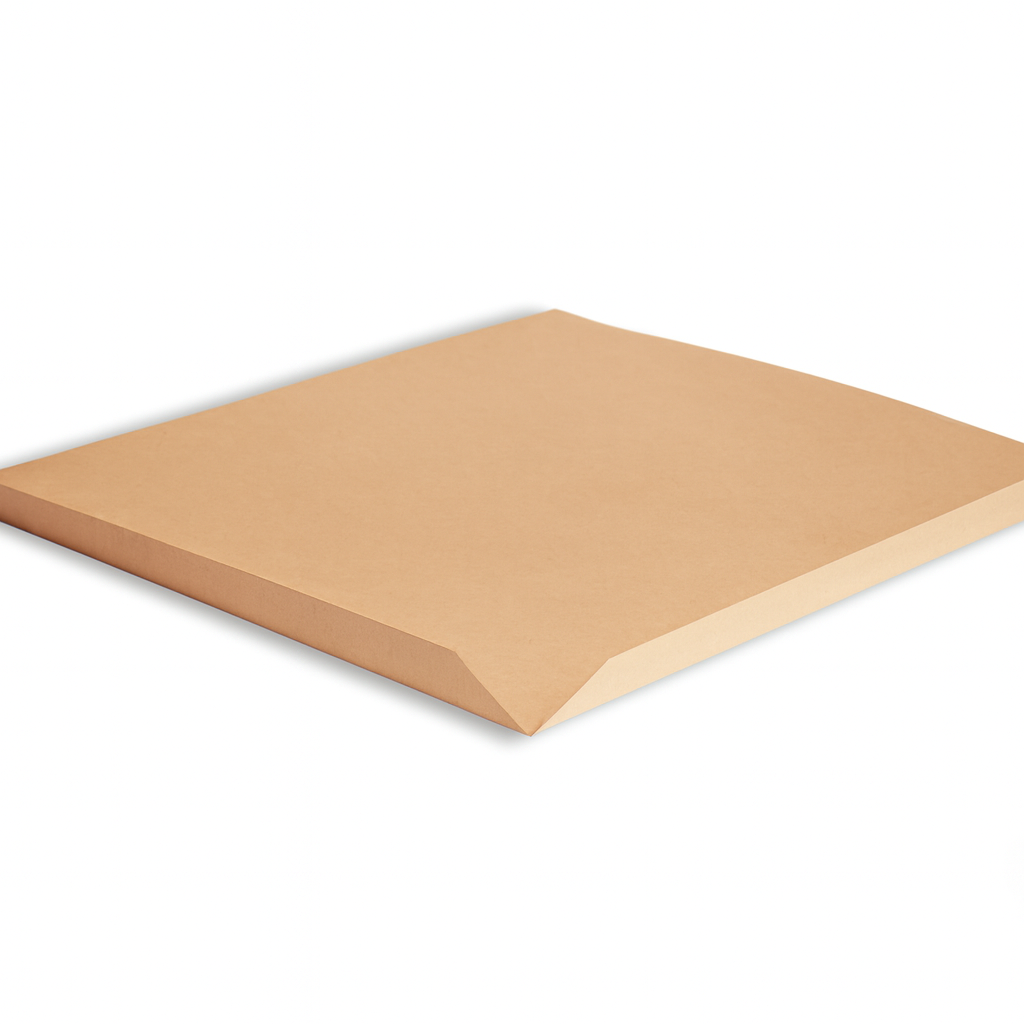Product Introduction
Cardboard slip sheets are designed as a smart alternative to wooden pallets in modern logistics. Made from strong fiberboard, they reduce shipment weight and maximize storage space. With slip sheet handling equipment, you can move goods efficiently, cut transport costs, and adopt a fully recyclable solution that supports sustainable operations.

Product Features
Space Saving: Thin sheets replace bulky pallets, creating more room for goods in containers and warehouses.
Lightweight: Lower sheet weight increases product load per shipment and reduces freight costs.
Stable Handling: Non-slip surface holds stacked goods securely during loading, unloading, and transport.
Cost Saving: Purchase price and transport costs are lower compared to wooden pallets.
Easy Integration: Works with forklifts using push-pull or roller attachments, with simple equipment adjustments.
Recyclable: Made from 100% recycled fiberboard, reducing wood use and supporting sustainability.
Technical Parameters
| Parameter | Specification |
| Material | Paperboard / Fiberboard |
| Dimensions | 1000 × 1200 mm (customizable) |
| Thickness | 1–2 mm |
| Capacity | 500–1200 kg |
| Color | Brown |
| Recyclability | 100% recycled |
| Certifications | ISO / SGS / ROSH |
Product Advantages
Higher Load Volume: Replace pallets and gain up to 10% more usable container space, allowing you to move additional units per shipment.
Weight Reduction: Each slip sheet weighs less than a pallet, so you save hundreds of kilograms per truckload. This can increase cargo weight capacity by up to 2 extra tons per load.
Lower Costs: Reduce spend on pallet purchase, maintenance, and repairs. Lighter shipments also mean reduced fuel consumption, delivering long-term savings across transport and storage.
Easy Disposal: After use, slip sheets can be recycled quickly with standard waste processes, eliminating disposal fees or special treatment required for wood.
Safe Handling: Smooth cardboard construction avoids nails, staples, or splinters that often cause worker injuries with pallets, making warehouse operations safer.
Quick Replacement: If a slip sheet is damaged, you remove and recycle it instantly without disrupting the production line. This minimizes downtime and keeps shipments moving.
Product Applications
Transportation of Goods: Act as a strong base layer in containers and trucks, replacing wooden pallets while maximizing payload.
Loading & Unloading: Work seamlessly with push-pull forklift attachments to move goods quickly and safely in high-volume operations.
Warehouse Storage: Allow dense stacking and compact storage. Thousands of slip sheets take the space of only a few pallets, freeing up valuable warehouse area.
International Shipping: Reduce freight weight and volume, cutting costs in sea and air transport. Their compliance-friendly design eliminates export delays.
Industry Use: Widely adopted in food, beverage, electronics, pharmaceutical, and manufacturing supply chains that require hygienic, cost-efficient packaging.
Layer Separation: Serve as stabilizing dividers within stacked goods, making it easier to access, move, or separate product layers during handling.
Export Packaging: Provide an efficient solution for global distribution networks where lightweight, recyclable, and compliant packaging is a must.
FAQ
Q: How are slip sheets used in shipping?
A: Slip sheets are placed under a load of goods. Forklifts with push-pull attachments grip the sheet to lift and move goods without pallets.
Q: What are the advantages of using cardboard slip sheets?
A: They lower costs, reduce shipping weight, save space in storage and transport, and are fully recyclable for easy disposal.
Q: Can slip sheets carry heavy loads?
A: Yes. Slip sheets, though thin, are engineered to handle heavy loads comparable to pallets, depending on sheet quality and design.























